A dental implant is a process of fitting an artificial tooth that is done to treat a missing one. In dental implants, our jawbone merges with the implant to form a secure platform for an artificial tooth (prosthesis). Abutments are a part of the treatment which is intended to join the prosthesis to the implants. A healing abutment is a volatile component of the endosseous implant, which allows the healing of the soft tissue. These are designed to be used in the upper or lower jaw to support tooth replacements and restore the chewing function of teeth. Abutments can be placed at the time of implant, or they can be placed during another surgery following implant placement.
An abutment plays the role of an adapter, and very much needed to be a link between implant and jawbone. The healing abutment is a titanium cylinder with hypoallergenic properties that comes with different sizes depending on the needs of the patient.
How Is the abutment fitted?
Once the osseointegration is complete, a patient may need another minor surgery to fit the abutment with the help of local anesthesia— the piece where the crown will eventually attach.
To place the abutment, the oral surgeon reopens the patient's gum to expose the dental implant. If you are having a second surgery to place abutments, a small incision is first made in the gum tissue. Once the abutment is attached to the dental implant, the gum tissue is then closed around. And because the abutment juts past the gumline, it is visible when the mouth is open, and it will be that way until the dentist completes the tooth prosthesis. And in some cases, patients prefer to have the abutment placed in a separate procedure as they don't like that appearance. Once the abutment is placed, your gums must heal for about two weeks before the artificial tooth can be attached. And during the healing time, you need to follow your surgeon's advice about how to take your oral care and what kinds of foods to eat. If you are visiting our San Francisco office, you will also be given proper instructions for cleaning around the abutments. Thorough cleaning prevents infection and promotes faster healing.
The following steps are required for the treatment:
- The dental implant placement
- Fixing by screwing of the healing abutment
- The implant integration
- The process of the healing abutment removal
- Attaching a permanent, durable abutment
- The restoration on it the top of the tooth-the crown
And once the abutments are placed, the surgeon may be called if you have any of the following:
- Continuous bleeding
- A bite that feels wrong
- Pain in the jaws, mouth, or sinuses
- High fever over 100.4ºF (38ºC)
- A prosthesis that feels loose, or weak
After your gums have entirely healed around the abutments, the dentist will start the process of designing your permanent prosthesis (a custom fit). The dental professional will make impressions of your jaws, teeth, and abutments. This helps to create a model of your mouth; accordingly, a new prosthesis is then made from this model. The process may call for several office visits (a few weeks or months), to get a precise model of your mouth and to build your prosthesis. And once your prosthesis is ready, you'll have several fittings to see how it feels in your mouth. The dentist may instruct you not to eat hard or crunchy foods for a few weeks to make it settled down properly.
Is It Painful?
The whole procedure of treatment is performed under local anesthesia or intravenous sedation. In most cases, the procedure is pain-free, where patients go to sleep and wake up when the procedure is complete. Most patients return to their regular life the very next day of the procedure. But little pain may be felt after the termination of the anesthetic, as the process of soft tissue healing occurs after small insection. And if pain increases and troubles you, or lasts longer, you need to bring it to the notice of the dentist. The dentist needs to consult thoroughly. And it is very significant to take proper oral care after the implant and healing abutment placement is done.
To sum up, we can say that the dental implant procedure is a primarily therapeutic process, which is not a concealed one. Still, the aesthetic component in dental implantology plays a crucial role. Indeed, toothache not only affects the quality of life but also leads to a loss of confidence in a person. Therefore, it is vital to learn how to get the best aesthetic result. A successful implant treatment focusses on essential components of the design for dental restoration as healing abutments (caps) are used. Healing abutments, which are also known as called healing cuffs or caps, help the gum tissue to improve around the implant site. Once the gum has healed completely, final abutments are placed so the prosthesis can be joined with the implant.
To deal with your dental issues, it is required to choose a dental implant expert having proper skills, apt training, and also should have enough experience to assess your situation and custom design a personalized treatment plan applicable for you.
Implants Pro Center©, San Francisco, offers a consultation at your convenience. You can learn more about dental implants and Implant Pro Center's treatment approaches. Find out today how dental implants can change your life. At Implants Pro Center©, San Francisco, we take all primary dental and medical PPO insurances, along with Medicare, thereby decreasing your anxiety about the expense of dental implant treatment or any oral surgeries. A tremendously experienced and caring team will give life-long care, maintenance, and assistance. Implants Pro Center©, San Francisco, is also decked with all the modern technologies like CT-Scan, Intravenous Sedation, Platelet Rich Fibrin, etc. to present nothing less than the best of services. You will be entirely at ease for any of your surgeries.
